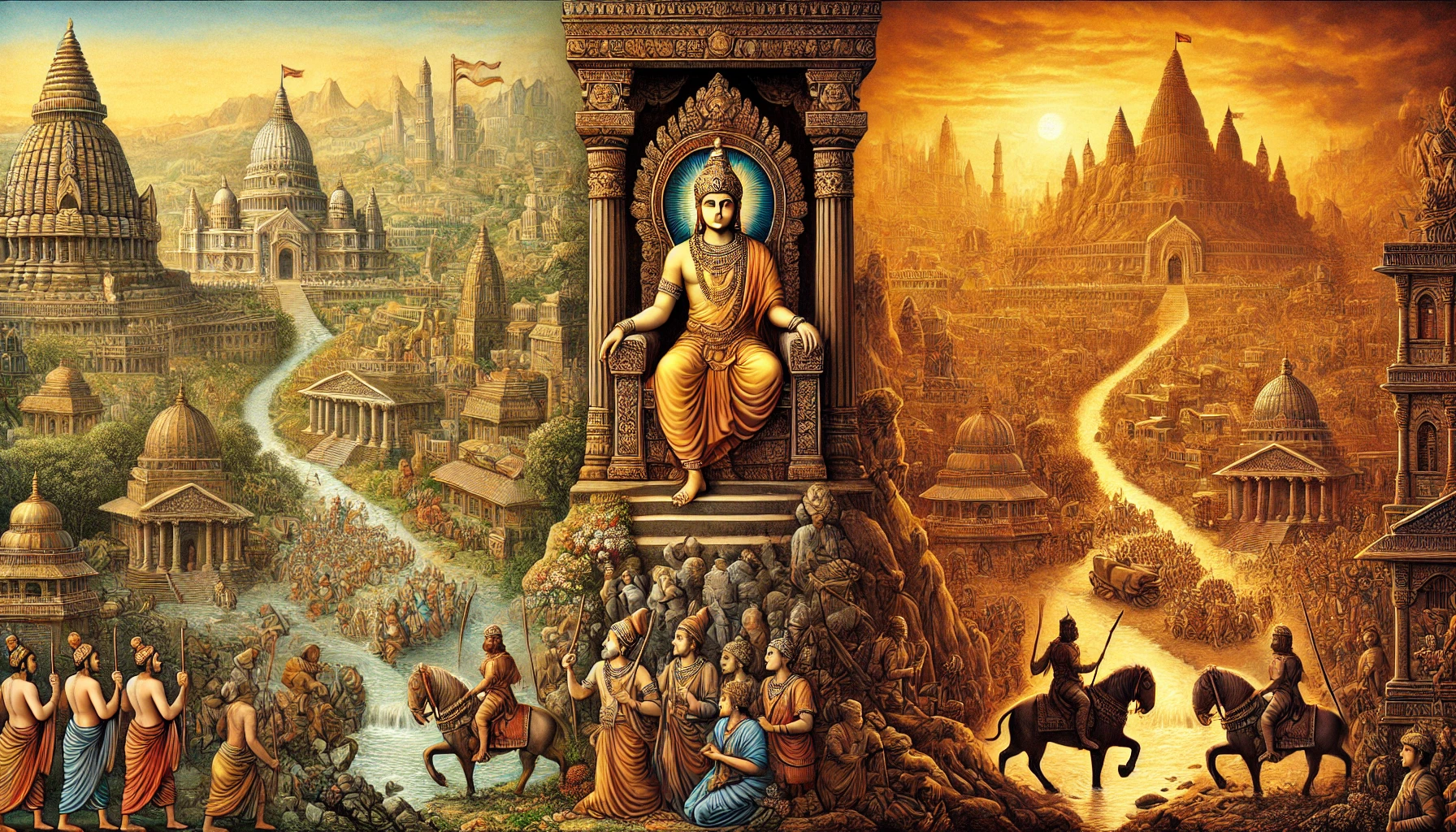The Rise and fall of Gupta Empire marks a significant chapter in Indian history. The Gupta Empire was known for its golden age, where culture, science, and economy flourished. It started around 320 CE and grew rapidly, reaching its zenith under rulers like Chandragupta I, Samudragupta, and Chandragupta II. The empire’s decline began in the late 5th century, leading to its eventual collapse.
- The empire expanded through strategic marriages and conquests.
- Samudragupta was known as the “Napoleon of India” for his military achievements.
- Chandragupta II promoted art and culture, leading to a golden age.
Despite its grandeur, the Gupta Empire faced many challenges that contributed to its decline. Internal conflicts, weak successors, and external invasions played critical roles in the empire’s downfall. The Huna invasions, in particular, weakened the empire’s foundations, leading to its fragmentation.

Rise of the Gupta Empire
The Gupta Empire began with Chandragupta I, who established his reign through strategic alliances. His marriage to a Lichchhavi princess helped in gaining territory and influence. This marked the beginning of a powerful empire. Samudragupta, his son, expanded the empire further, conquering territories and establishing a strong central administration. He was not only a warrior but also a patron of arts and culture. His reign laid the foundation for the golden age of the Gupta Empire.
Under Chandragupta II, also known as Vikramaditya, the empire reached its peak. The period saw great advancements in science, literature, and art. The Gupta period is often referred to as the golden age of India. It was during this time that the famous Nalanda University was established, and scholars like Aryabhata made significant contributions to mathematics and astronomy. The empire was known for its efficient administration, economic prosperity, and cultural achievements.
Fall of the Gupta Empire
The decline of the Gupta Empire began after the reign of Chandragupta II. His successors lacked the same leadership qualities, leading to internal strife and weakening of the central authority. The empire was also under constant threat from external forces, especially the Hunas. The Huna invasions played a crucial role in the empire’s downfall. The repeated attacks weakened the military strength of the Guptas, leading to loss of territories and eventual fragmentation of the empire.
Moreover, the rise of local kingdoms also contributed to the fall of the Gupta Empire. These smaller kingdoms began asserting their independence, further weakening the central power. The empire, once known for its unity and strength, was now a collection of fragmented states. By the mid-6th century, the Gupta Empire had lost its former glory, marking the end of one of India’s most significant dynasties.

Legacy of the Gupta Empire
Despite its fall, the Gupta Empire left a lasting legacy. The period is remembered for its contributions to Indian culture, science, and art. The advancements made during this time laid the foundation for future developments in various fields. The Gupta Empire may have declined, but its impact on Indian history remains significant.
Conclusion
The Rise and fall of Gupta empire is a testament to the cyclical nature of history. The empire rose to great heights, bringing prosperity and cultural achievements to the Indian subcontinent. However, internal weaknesses and external pressures eventually led to its decline. The story of the Gupta Empire serves as a reminder of the impermanence of power and the enduring legacy of cultural achievements.
| Rise and Fall of Gupta Empire UPSC Notes |
| 1. The Gupta Empire began around 320 CE, reaching its peak under rulers like Chandragupta I, Samudragupta, and Chandragupta II. 2. The empire expanded through strategic marriages, military conquests, and strong central administration, marking the beginning of a golden age in Indian history. 3. Significant contributions to science, literature, and art were made during the Gupta period, with scholars like Aryabhata advancing mathematics and astronomy. 4. The decline of the Gupta Empire began with weak successors, internal conflicts, and the devastating Huna invasions, which weakened the empire’s military strength. 5. The Gupta Empire’s fall resulted in the fragmentation of territories and the rise of local kingdoms, leading to the end of a significant dynasty. |
